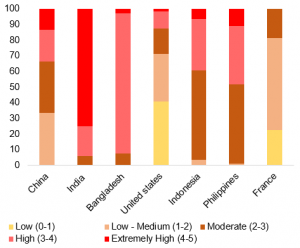As the crew of Apollo 13 famously understated when their spacecraft was shaken by an onboard explosion 300,000 km above the earth — we have a problem.
The latest State of Food Security and Nutrition in the World Report warns that almost 9% of the world’s population is undernourished. Almost 20% of these undernourished people are in Africa and, despite recent progress towards achieving Zero Hunger over the last few years, more than 50% are in Asia. If these numbers are not devastating enough, consider that they do not yet include the 100 million people expected to be driven into extreme poverty by the end of 2020 by the COVID-19 pandemic which has, according to the Global Commission on Adaptation, “tragically exposed the risks that humanity faces and how unprepared we are to respond.”
One of those risks is how the climate crisis is affecting our farmers’ ability to grow nutritious food.
Changes in planting and harvesting seasons, variable and extreme weather events, and increased water risks are making countries increasingly vulnerable. Even small fluctuations can be devastating when you are dependent on your harvest for your food and nutrition security. All this on a planet whose boundaries are being pushed beyond the limits when it comes to environmental damage. That we need to change the trajectory of our food systems is abundantly clear.
SPACE TO EARTH — ARE YOU RECEIVING?
The Apollo 13 astronauts managed to navigate their perilous way home, guided by real-time information sent from the ground by the NASA team at Mission Control. Today information arriving from observation satellites orbiting miles above the earth is guiding actions to avoid or reduce the risks of a nutrition crisis back here on earth – a risk that has been tragically exposed by the COVID-19 pandemic which has shown just how unprepared we can be to respond to threats to people’s health, well-being, and livelihoods.
Deploying environmental data available free via Google Earth Engine, scientists from the International Water Management Institute (IWMI) and the CGIAR Research Program on Water, Land and Ecosystems (WLE) have developed a map that shows the state of maturity of 40* crops that are critical for food and nutrition security around the world.
By estimating the nutrition values contained in those crops, and overlaying information about their maturity along with current and future climate data, and economic data, the scientists can map a global scale of nutrition risk levels to better manage risks, for example, water stress.
 Source: IWMI
Source: IWMI
 Knowing the global crop diversity (water Stress vs Resilience). Source: IWMI
Knowing the global crop diversity (water Stress vs Resilience). Source: IWMI